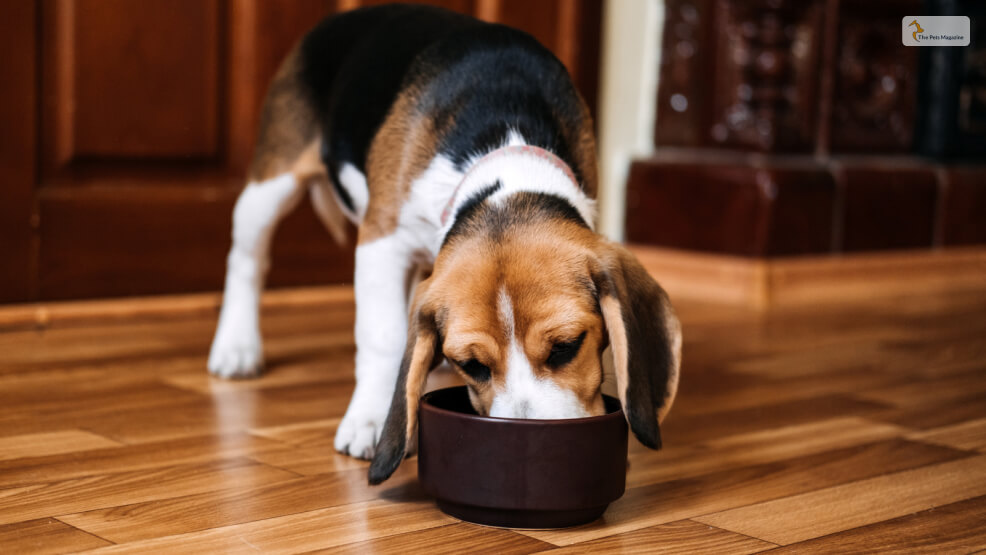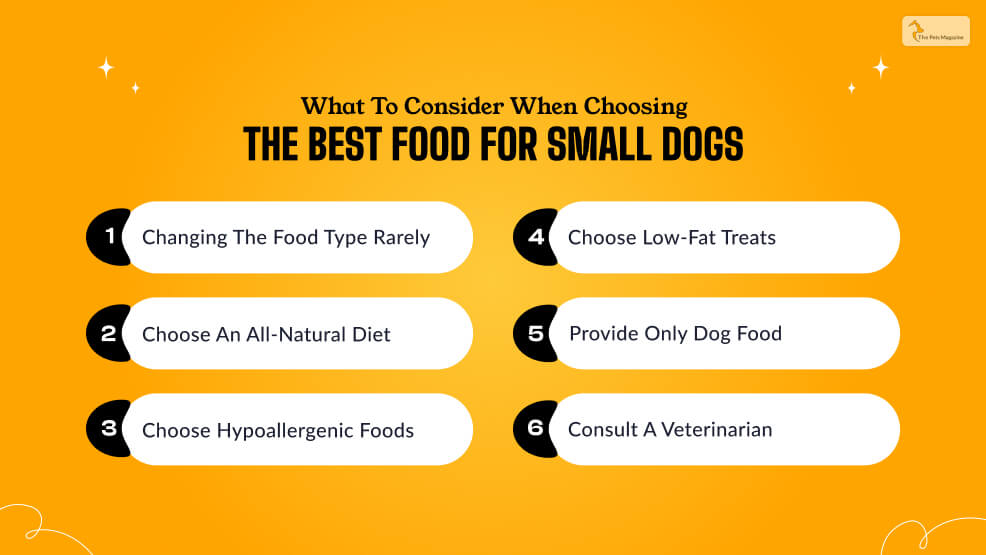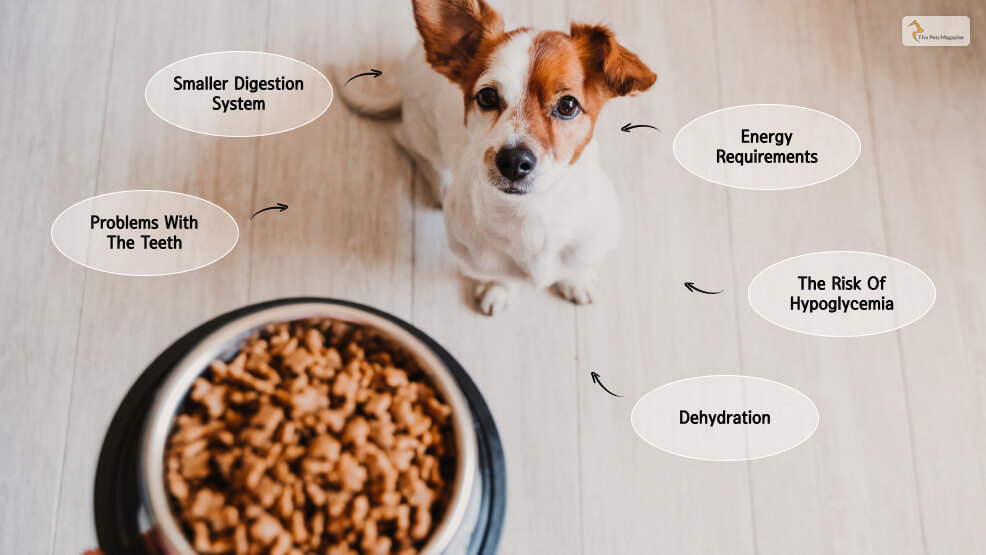Essential Tips For Picking Dog Food For Small Dogs


Every new dog owner has probably wondered how to feed their new pet.
Even though every dog is different, there are several general guidelines that pet parents should follow when it comes to feeding. When they are still fun-loving and adorable puppies, the right tips for giving them essential nutrients are very important since this is an important development period during their early years.
The best dog food for small dogs deserves just as much consideration and care as for large dogs. Interestingly, their food and nutritional requirements are slightly different, and understanding that will assist you in selecting the best food for your dog.
Small dogs require less food daily, so you can afford better dog food if you feed them ounces rather than pounds. Small dog food selection can be difficult for new parents. Here’s what you need to know.
Nutrition Requirements For Small Dogs
There’s no difference in nutritional balance between small and larger dogs when we say they need different food. The nutritional needs of a small dog are the same as those of a large dog.
Due to their tiny size, small dogs have faster metabolisms, which means more food per unit of weight is needed. Smaller dogs lose heat more rapidly and use more calories to maintain body temperature because they have a higher surface area to volume ratio. That’s why small dogs need more calories per pound. The following are some additional reasons why small dogs require different dog foods:
1. Smaller Digestion System
Small dogs’ small stomachs and digestive systems may make digesting and absorbing large meals difficult. Therefore, they may require nutrient-dense, smaller meals more frequently.
2. Problems With The Teeth
Dogs with small mouths are particularly prone to dental problems, which affect their chewing and digestion. For dogs with difficulty swallowing large chunks of food or softer textures, giving them smaller pieces of food is helpful. Raw bones may not be suitable for dogs with dental problems.
3. Energy Requirements
A small dog’s energy requirements differ from those of a larger dog. A small dog needs to conserve energy to prevent overexertion or fatigue, while a large dog may require plenty of energy for running and playing. Keeping your carbs low and fat moderate will keep you feeling fuller longer without gaining weight.
4. The Risk of Hypoglycemia
Small dogs are more likely to develop low blood sugar (hypoglycemia) when they have not eaten for several hours. Providing more frequent and nutritional meals to small dogs can help to prevent this problem.
5. Dehydration
Small dogs are also more likely to become dehydrated due to their body size. Ensure that your small dog is receiving ample fresh water. There is also a greater risk of dehydration in small dogs suffering from diarrhea or vomiting. Ensure that sticky gums do not pinch the skin on the back of the neck.
What to Consider When Choosing the Best Food For Small Dogs

Now that you know their nutritional needs, here are a few tips for choosing the best food for small dogs.
1. Changing The Food Type Rarely
The stomachs of these little dogs do not tolerate a variety of foods. They can consume a certain food for several days after becoming accustomed to it. Additionally, the ease of increasing quantity is another reason why the type of food is not changed.
As a dog grows, gradually increasing food intake provides the dog with more nutrients, fats, and vitamins, which is important when determining how much to feed. Furthermore, switching brands is not a desirable option. Therefore, sticking to a single brand or recipe would be advisable.
2. Choose an All-Natural Diet
If you intend to serve your pup homemade meals, ensure that it has all the valuable nutritional requirements and that your dog likes them. For those unable to prepare meals for their pets, it is possible to purchase ready-made dog foods.
Here are a few tips on choosing and purchasing dog food from shelves:
- You should read the labels on your dog food before purchasing it. Beware of labels that claim to be “all-natural” or “all-pure.” Ensure that all items on the ingredient list contain only natural, whole ingredients by carefully reading them.
- Preservative-free foods should be avoided.
- Skip sugar-containing foods in the diet.
- Choose diets that are made with whole foods.
3. Choose Hypoallergenic Foods
Hypoallergenic foods and hydrolyzed diets are suitable for dogs suffering from food sensitivities. Food allergies are less common in pets than those to airborne allergens. Food allergies can affect any breed, but Labrador Retrievers, West Highland White Terriers, and various greyhound colors are at an elevated risk.
4. Choose Low-Fat Treats
If you bring a puppy or an adult dog into your family, you will most likely grab many treats for training. Treats like these, however, may cause unnecessary weight gain. Most training occurs during the pup’s developmental years, so loading their stomachs with fat and sugar is not recommended. Consequently, you should analyze your daily fat intake to ensure you are not consuming excessive fat. It is always a good idea to consult the diet chart.
The following are some good low-fat food options:
- Carrot
- Lettuce
- Apple
- Watermelon
- The green pea
- Brussel sprouts
- Sweet potato
5. Provide Only Dog Food
You find yourself so tempted to offer your little companion a bite when she’s seated beside you. As soon as a habit is formed, reversing it becomes difficult.
Furthermore, most people are unaware that there are some foods that dogs cannot consume. As an example, grapes can be used. Despite its beneficial properties for humans, this fruit is unsuitable for dogs. The same goes for onions, avocados, and beer, which may cause vomiting, irregular heartbeats, and digestive issues.
6. Consult a Veterinarian
New parents should consult their veterinarian when bringing a puppy home. Several aspects must be considered, and risks must be weighed before food is offered. A veterinarian can also analyze the nutrients, carbs, and vitamins your dog needs. When the dog has some dietary restrictions, this becomes even more important.
How To Choose the Right Dog Food for Your Small Breed

When selecting dog food for your small breed, consider the following factors:
Nutrient Requirements:

- Calorie content: Small breeds have higher metabolic rates, so they need more calories per pound of body weight than larger breeds. Ensure the food provides adequate calories to maintain a healthy weight.
- Protein: Protein is essential for muscle development and repair. Look for a food with a moderate protein content, as excessive protein can strain their kidneys.
- Fat: Fat provides energy and helps absorb vitamins. A moderate amount of fat is necessary for healthy skin and coat.
- Carbohydrates: Carbohydrates provide energy. While a moderate amount is needed, excessive carbohydrates can lead to weight gain.
- Vitamins and minerals: Ensure the food contains all the necessary vitamins and minerals for optimal health.
Life Stage:
- Puppy food: Puppies have different nutritional needs than adult dogs. Puppy food is formulated to provide the extra nutrients they require for growth and development.
- Adult food: Adult dogs need a balanced diet to maintain their health and weight.
- Senior food: Senior dogs may have different nutritional requirements, such as lower calorie content and increased levels of glucosamine and chondroitin for joint health.
Health Conditions:
- Allergies: If your dog has allergies, look for hypoallergenic options or foods made with limited ingredients.
- Digestive issues: Some dogs may have sensitive stomachs or digestive problems. Choose a food that is easily digestible and gentle on their system.
- Weight management: If your dog is overweight or underweight, select a food formulated for weight management.
Quality Ingredients:
- Named meat sources: Look for foods that list named meat sources as the primary ingredient. Avoid foods with vague terms like “meat by-products.”
- Whole grains: Opt for foods that contain whole grains rather than processed grains, which are more easily digested.
- Avoid artificial additives: Avoid foods with artificial colors, flavors, and preservatives.
Size of Kibble:
Small breeds may benefit from smaller kibble sizes, as it can be easier for them to chew and swallow.
By considering these factors, you can choose a dog food that provides your small breed with the nutrients they need to live a healthy and happy life.
Conclusion
Selecting the right dog food for small dogs is a critical decision that requires careful consideration. By keeping their unique nutritional needs in mind, we can ensure their overall well-being and longevity.
Remember to consult with a veterinarian to determine specific dietary requirements, consider the ingredients list for quality and balance, opt for appropriate kibble size, and gradually transition to new foods. The following tips in the article will ensure that your small dogs are healthy and happy.
Read Also:








Leave A Comment